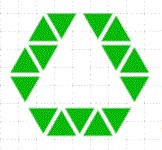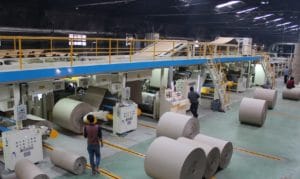In this article, I will show you how are corrugated boxes made in a modern equipped high-speed production plant. Not forgetting that new machines are improving all the time, in both quality and speed. This brings about a change in the ways and methods of production line manufacturing processes. If looking at how this progress comes about, you can observe that some machines are very similar, to what they were many years ago.
While others have changed completely! There is one outstanding factor that is very obvious when you enter one of these huge plants, which is the sheer size of the area they occupy. Then you will notice how quiet the machinery runs, following this how fast the new corrugated board travels down the production line.
Many new plants can reach speeds of 450 mpm, in everyday production speeds. Now you can understand the need for the size of the production room required to hold the amount of finished material.
So; How ARE Corrugated Boxes Made?
The raw box-making material comes into the warehouse as reels of paper. Many of these reels come from various parts of the world. They may arrive at the production plant warehouse, by container, on railway trucks, or lorries.
The Raw materials
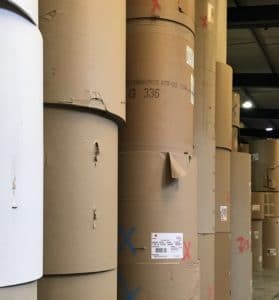
Depending on the type and standard of the box to be made, the customer will have specified the required number of plies needed for their order, plus other factors like colour, material to be used, number of plies, strength, and finish of the outer box, printed or pre-printed liner, etc.
Corrugated Box Making
The number of plies used in many corrugating machines can vary between 3 and 7. Within this corrugated sandwich, you can have a mix of flute sizes and material calipers.
In the following video, you can see a box-making plant in action…!
Where you can see the whole process of making a corrugated box, from start to finish.
See the various individual machine elements in action. NOTICE the size of the building that houses one of these complete box-making manufacturing plants!
High-Speed Machinery
Many of the elements that are used in the manufacture of corrugated boxes have not changed over decades.
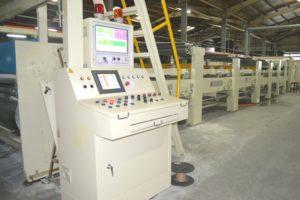
| M/c Speed | |
| MPM | = Km/Hr |
| 500 | = 30 |
| 450 | = 27 |
| 425 | = 25.5 |
| 400 | = 24 |
| 375 | = 22.5 |
| 350 | = 21 |
| 325 | = 19.5 |
| 300 | = 18 |
| 250 | = 15 |
| 200 | = 12 |
| 175 | = 10.5 |
| 150 | = 9 |
| 125 | = 7.5 |
| 100 | = 6 |
Process Automation
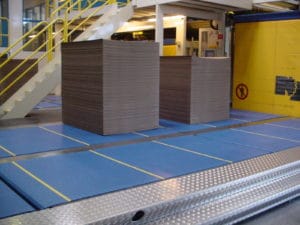
Cardboard Boxes for Crafts or DIY jobs
For crafts and ideas on how to make cardboard boxes, the following video will be of interest to those, that are making up a few boxes or for a school project in a classroom setting. Or for DIY’er’s moving house and wish to recycle larger boxes, by making smaller ones out of bigger boxes.
